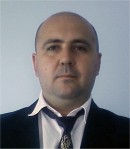|
Plenary
Lecture
Automatic Face Detection and Recognition Techniques

Dr. Tudor Barbu
Institute of Computer Science of the Romanian
Academy
Iasi branch
ROMANIA
E-mail:
tudbar@iit.tuiasi.ro
Abstract: Face recognition has become a very popular
field of research in computer vision, representing both
a pattern recognition and biometric domain. It is
preferable to many other biometric technologies because
of its non-intrusive character and because it is very
easy to use. Thus, facial recognition has a critical
role in biometric systems and it is also attractive for
numerous applications including visual surveillance,
access control, robotics and security systems. Face
detection and recognition represent two
strongly-correlated computer vision processes. Face
detection constitutes the first step for any automatic
face recognition system. Although there has been a great
amount of progress in face detection and recognition so
far, numerous issues remain unsolved. In spite of
several decades of extensive research the development of
a computer-based artificial facial recognition system
having capabilities comparable with those of human
vision systems represents an unachieved goal. Research
of human face detection has to confront many challenging
problems, related to viewpoint, outdoor illumination,
posing variation with large rotation angles, low image
quality, low resolution, occlusion, and background
changes in complex real-life scenes. Artificial face
recognition is also quite difficult because of some
factors, such as viewpoint, lighting conditions, facial
expressions, aging effects and occlusions.
There are several known categories of face detection
approaches: knowledge-based techniques, feature-based
methods, appearance-based approaches and template
matching methods. The template matching techniques have
been the most investigated during our research. We
proposed novel face detection approaches based on human
skin identification. A skin detection algorithm based on
explicitly defined regions is applied first, then a
correlation-based template-matching process is performed
on the detected skin regions. The most popular face
recognition techniques include Eigenfaces, Fisherfaces,
Linear Discriminant Analysis, Elastic Bunch Graph
Matching, Hidden Markov Models, Gabor filtering and
Dynamic Link Matching neuronal model. During our
research we considered original facial recognition
techniques based on Eigenfaces and Gabor filters. Our
Eigenface-based approach is based on the influential
work of Turk and Pentland, proposed in 1991. A
continuous differential model for face fature extraction
is provided, then the mathematical model is discretized.
The second recognition technique uses Gabor filtering in
the feature extraction stage. It applies a set of 2D
Gabor filters, at various frequencies, orientations and
standard deviations, on the facial images. An automatic
supervised classifier is used in both face
authentication cases.
Brief Biography of the Speaker:
Dr. Tudor Barbu is currently Senior Researcher II at the
Institute of Computer Science of the Romanian Academy,
Ia?i branch. He is the coordinator of an image and video
processing research collective at this institute. Mr.
Barbu has a PhD degree in Computer Science, awarded by
the Faculty of Automatic Control and Computers of the
University “Politehnica” of Bucharest.
He possess a remarkable research profile. In the last
decade he published two books and four book chapters as
single or main author. Also, dr. Tudor Barbu published
more than 60 articles in prestigious international
journals and volumes of international scientific events
(conferences, symposiums and workshops). His prolific
scientific activity also includes more than 30 research
reports, elaborated with the institute research team
coordinated by him or related to various research
projects. His scientific publications have numerous
citations, according to Google-Academic.
In recent years he also coordinated various research
directions in 6 projects based on contracts/grants. Dr.
Tudor Barbu received also several awards for his
research results, the most important being the Romanian
Academy Prize “Gheorghe Cartianu”, in the Information
Science and Technology domain, awarded on December 18,
2008. He is member of several conference scientific
committees and also member of scientific and technical
committee and editorial review boards of some journals.
He is the Editor in Chief of a book. His main scientific
areas of interest are: digital media (audio, video and
image) signal processing and analysis, pattern
recognition, computer vision, multimedia information
storage, indexing and retrieval, and biometric
authentication using voice, face and digital fingerprint
recognition.
|
